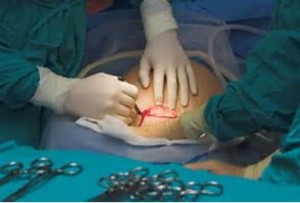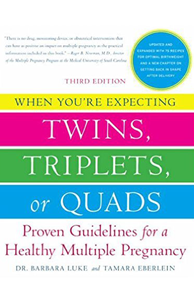
A necessary or unnecessary cesarean delivery?
The only effective and lasting solution to the issue of home birth safety is to understand what is driving women to consider this option. The majority of women choosing home birth understand there is a small but inherently higher risk associated with that decision. They choose it anyway, not because they are oblivious, but because of what they are trying to avoid. They desire childbirth in a comfortable, home environment surrounded by family with minimal medical intervention. Mostly, they want to avoid an unnecessary cesarean birth.
Here are the harsh facts about Obstetrics in the US today. One out of three babies are born through a surgical incision in the lower abdomen and uterus. This is certainly not what God or evolution planned. The current rate is 60% higher than in 1996 and a 7-fold rise since the first recorded rate of 4.5% in 1965. In SC, the cesarean rate was 35% in 2010, but has fallen slightly in the last couple of years. This rapid rise could be acceptable if it were accompanied by reductions in maternal or neonatal morbidity or mortality. Unfortunately, it is not.
In 1985, the World Health Organization (WHO) concluded that the ideal cesarean birth rate was between 10-15%- a recommendation reaffirmed by the WHO in 2014. Based on review of available international data, the WHO reported that cesarean rates up to 10% were associated with reductions in maternal and neonatal deaths. However, rates above 10% up to 30% had no impact on maternal or child mortality.
A very recent paper by Mary D’Alton and Mark Hehir (JAMA 2015 Dec 1;314:2263) examined the relationship between cesarean rates and maternal and neonatal mortality in 2012 among 194 WHO member countries. Cesarean delivery ranged from 0.6% in the South Sudan to 55.6% in Brazil. They found that cesarean delivery rates up to 19% were associated with lower maternal and newborn mortality.
However, whether the optimal cesarean rate is 10%, 15% or 19%, that still means that 40-60% of all cesareans in the US may be unnecessary in terms of protecting mother or improving newborn outcomes. We have seen the enemy and it is us. If we can’t reverse this trend, then we shouldn’t be surprised that women will be drawn to the option of a home birth.
So why can’t we stop shooting ourselves in the foot? That’s a complicated question and many factors must be considered. Some claim there is a greater demand by women for elective cesarean delivery. It is actually a small but growing number. A low end estimate is that 1% of all cesareans are purely elective. At the high end, one study reported that 5.5% of cesareans in low risk women had no medical indication in 2001, up from 3.3 % in 1991. Some believe that liability pressures drive up the cesarean rates, but this doesn’t explain the 60% increase since 1996 during which time there has been little change in the medico-legal climate. It’s also not likely due to a changing birthing population that is older, heavier and more likely to be medically complicated. Studies show that the cesarean rate is going up for all groups regardless of age, size, race or risk.
The primary reason for the increase is attributed to the vague explanation of “changing practice patterns.” What this basically means is that there is a greater willingness on the part of obstetricians to resort to cesarean delivery in multiple medical and obstetrical situations. For both this and the above to be true, then a large percentage of these cesareans are being recommended under conditions where its benefit is not established and where the risks of unnecessary surgery are underemphasized.
It is worthwhile mentioning those surgical risks that the home birth proponents are trying to avoid. Cesarean birth is an extremely safe surgical procedure, which is partly why it’s chosen even if the benefits are not well defined. However, all surgery carries some risk. Maternal mortality is very rare, but cesarean birth has an almost 4-fold higher risk than vaginal birth (3.6 vs 13.3 per 100,000 live births). Other short term risks such as unintended surgical cuts, wound separation, surgical site infections, blood clots, transfusions and readmission to the hospital are all more common with cesarean birth.
Possibly more important, are the longer term risks. Pelvic scarring (adhesions) can lead to chronic pelvic pain, ectopic pregnancy or bowel obstructions. Pelvic or uterine scarring has been associated with an increased risk of infertility and future miscarriage. A uterine scar is associated an approximate 1% risk of uterine rupture in the next pregnancy.
Uterine scarring increases the risk of placental implantation abnormalities in future pregnancies. Placenta previa occurs 1% of the time after one cesarean and up to 3% of the time after 3 cesareans. About 40% of placenta previa after a cesarean will be complicated by placenta previa accreta. Placenta accreta is the most dreaded OB emergency associated with massive transfusion, hysterectomy and a maternal death rate that is rising after a century of decline.
There is also growing evidence that cesarean birth is associated with childhood conditions such as early onset diabetes, allergies and asthma. The fetus not being exposed to the stress hormones of labor or possibly the lack of exposure to the maternal microbiome of the vaginal canal may be responsive for these immunologic abnormalities in the child. The bottom line is that there must be a price to pay for bypassing millions of years of evolution.
So, is there an alternative to taking the risks of a home birth? Imagine a new hospital- the Charleston (or name your own city) Women’s Hospital whose brochure advertises the following:
-Spacious, calm, comfortable home-like rooms in a family friendly atmosphere
– Alternative birthing options available
-A midwifery model of care with doula support for low risk pregnancies
-High risk specialists, hospitalists and residents for complicated pregnancies or for those women preferring an obstetrician
-Informed choice of vaginal birth for women with a prior cesarean, twins with the first twin vertex and selected breech infants
-Fetal presentation assessed at 36-37 weeks and external cephalic version offered for singleton breeches
-Use of the new revised definitions of active phase labor (at least 6 cm) and active phase arrest, allowing longer labor trials before dystocia is diagnosed
-A longer duration of second stage allowed and well-trained specialists available to perform forceps and/or vacuum vaginal delivery as alternative to second stage cesarean
-Intermittent fetal heart rate monitoring in low risk pregnancies and standardized interpretation of continuous fetal monitoring by senior OB consultants in high risk pregnancies
-No inductions of labor prior to 41 0/7 weeks gestation unless significant maternal or fetal indications
-No inductions of labor for suspected fetal macrosomia (estimate usually wrong) and offer cesarean only for EFW > 5,000g in non-diabetics and > 4,500g in diabetics
-Continuing review of individual cesarean rates and appropriateness of indication
-The medical-industrial complex should not create any financial incentive for cesarean delivery. Physician payments should be higher for long labors or an operative vaginal delivery compared to a cesarean. The hospital facility and anesthesia fees should be the same regardless of the mode of delivery.
At the end of the day, your new Women’s Hospital will boast an appropriate and defensible cesarean delivery rate. It will boast a cesarean delivery rate that is approximately half that of your competing hospitals. It will rapidly become the most popular birth facility in the region, if not the state. And, as a consequence, home births will virtually disappear in your community.
While I have been employed in the OB-Gyn department of the Medical University of South Carolina for more than 30 years, this is a personal blog and the views expressed here are my own and do not reflect the views of my employer.







Thanks for your thoughtful review of this issue. It is clear we can offer a more consumer friendly birth experience and your blog helps us see what’s possible if we do so.
Thanks. That was the idea. What do they say…..”Changing What’s Possible” If anyone had the nerve to really dedicate their facility to natural deliveries and a minimal 10-15% Cesarean rate it would be pretty interesting to see how they do. I think they would flourish!
The Blog this Sunday will be more tongue in cheek. Let me know if you like it or offended. 🙂